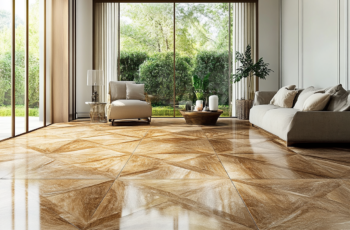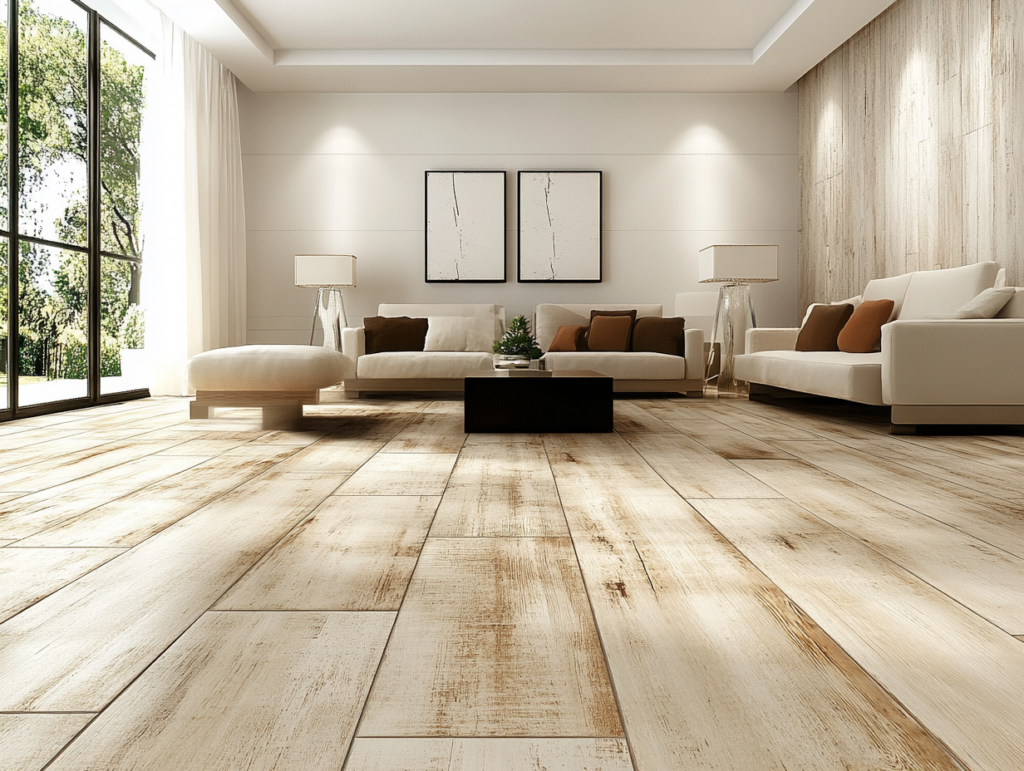
Comprehensive Guide on Flooring for Homeowners
Introduction
Choosing the right flooring for a home is a significant decision for homeowners, impacting aesthetics, functionality, and resale value. This report explores various flooring options available in the market, their benefits and drawbacks, installation considerations, maintenance requirements, and health benefits associated with different types of flooring.
Executive Summary
This comprehensive guide examines seven major flooring types and provides actionable insights on selection, installation, and maintenance. You’ll learn about durability, cost considerations, and which options work best in different home environments. By the end, you’ll be equipped to make an informed flooring decision tailored to your specific needs.
In this Guide
- Types of Flooring
- Installation Considerations
- Maintenance and Care
- Health Benefits of Flooring Choices
- Looking for Flooring Installers?
- Conclusion
- References
Types of Flooring
Vinyl Flooring
Vinyl flooring is a popular choice due to its durability and cost-effectiveness. It is made from synthetic materials, primarily PVC, and is available in various forms, including planks, tiles, and sheets.
- Pros:
- Durability: Scratch and stain-resistant, making it ideal for high-traffic areas.
- Waterproof: Suitable for kitchens and bathrooms.
- Variety: Available in numerous colors and designs, including options that mimic hardwood and stone.
- Easy Installation: Can be installed using adhesive, peel-and-stick, or click-lock methods.
- Cons:
- Limited Lifespan: Generally lasts 10-20 years, depending on quality.
- Environmental Concerns: Made from synthetic materials, which may not be eco-friendly.
Tile Flooring
Tile flooring, particularly ceramic and porcelain, is favored for its water resistance and durability, making it ideal for moisture-prone areas.
- Pros:
- Durability: Resistant to scratches and moisture, suitable for bathrooms and kitchens.
- Variety: Available in various styles, colors, and textures.
- Low Maintenance: Easy to clean and maintain.
- Cons:
- Cold and Hard: Can be uncomfortable to stand on for long periods.
- Installation Complexity: Requires skilled installation, especially for natural stone tiles.
Laminate Flooring
Laminate flooring offers the appearance of hardwood or stone at a lower cost and is made from composite wood materials.
- Pros:
- Cost-Effective: More affordable than hardwood and tile.
- Easy Installation: Features a click-lock design for DIY installation.
- Variety: Available in numerous styles and finishes.
- Cons:
- Susceptible to Water Damage: Not ideal for areas with high moisture.
- Limited Lifespan: Typically lasts 10-15 years and cannot be refinished.
Hardwood Flooring
Hardwood flooring is a classic choice that adds warmth and elegance to any home.
- Pros:
- Aesthetic Appeal: Timeless beauty that can increase home value.
- Durability: Can last for decades with proper care.
- Refinishing: Can be sanded and refinished multiple times.
- Cons:
- Cost: Higher initial investment compared to other flooring types.
- Maintenance: Requires regular upkeep to prevent scratches and water damage.
Hybrid Resilient Flooring
Hybrid flooring combines the benefits of vinyl and laminate, offering durability and a variety of styles.
- Pros:
- Waterproof: Suitable for moisture-prone areas.
- Durability: Resistant to scratches and stains.
- Variety: Available in designs that mimic natural materials.
- Cons:
- Cost: Generally more expensive than traditional vinyl or laminate.
Carpet Flooring
Carpet provides warmth and comfort, making it a popular choice for bedrooms and living areas.
- Pros:
- Comfort: Soft underfoot, providing warmth and noise reduction.
- Variety: Available in numerous colors, textures, and styles.
- Cons:
- Maintenance: Requires regular cleaning and can trap allergens.
- Durability: Generally has a shorter lifespan compared to hard flooring options.
Other Flooring Options
- Bamboo Flooring: Eco-friendly and durable, offering a unique aesthetic.
- Cork Flooring: Comfortable and sustainable, but can be susceptible to moisture.
- Concrete Flooring: Durable and low-maintenance, but can be cold and hard underfoot.

Installation Considerations
When installing flooring, homeowners should consider the following:
- Subfloor Preparation: Ensure the subfloor is clean, dry, and level.
- Acclimation: Allow flooring materials to acclimate to the room’s temperature and humidity before installation.
- Installation Method: Choose the appropriate installation method based on the flooring type (e.g., glue-down, floating, or nail-down).
- Professional Help: For complex installations, consider hiring a professional to ensure quality workmanship.
Maintenance and Care
Proper maintenance is essential for prolonging the life of flooring:
- Vinyl and Laminate: Regular sweeping and occasional mopping with a damp cloth.
- Tile: Clean with a damp mop and avoid harsh chemicals that can damage grout.
- Hardwood: Regular dusting and occasional refinishing to maintain appearance.
- Carpet: Regular vacuuming and professional cleaning as needed.
Health Benefits of Flooring Choices
Hardwood and other hard surface floors can improve indoor air quality by reducing allergens and dust mites. According to the U.S. Environmental Protection Agency (EPA), hardwood floors do not harbor microorganisms, making them a healthier choice for families, especially those with allergies (Wood Floors, n.d.).
Looking for Flooring Installers?
Now that you understand the various flooring options available, you may be ready to move forward with your project. Finding reliable, experienced flooring installers is crucial to ensuring proper installation and maximizing the longevity of your new floors. Consider these steps when searching for professional installation services:
- Get Multiple Quotes: Contact at least three different installers to compare pricing, timeline, and services offered.
- Check Credentials: Verify that installers are licensed, insured, and have experience with your specific flooring type.
- Review Past Work: Ask for references or photos of previous installations to assess quality.
- Ask About Warranty: Inquire about manufacturer and workmanship warranties for your peace of mind.
Many flooring retailers offer installation services or can recommend trusted professionals in your area. Taking the time to find the right installer will help ensure your new flooring is properly installed and provides years of beauty and functionality.
Conclusion
Choosing the right flooring involves considering various factors, including aesthetics, durability, maintenance, and health benefits. Each flooring type has its unique advantages and disadvantages, making it essential for homeowners to assess their specific needs and preferences. By understanding the options available, homeowners can make informed decisions that enhance their living spaces and add value to their homes.
References
- Home Depot. (2024). Types of Flooring.
- Colibri Real Estate. (2025). 11 Types of Flooring That Will Upgrade Your Home Instantly.
- Consumer Reports. (2023). How to Select the Best Flooring for Every Room in Your Home.
- A+ Hardwood Floors. (2023). Benefits of Hardwood Flooring.
- Bona. (2023). Why Choose Hardwood Floors?.
